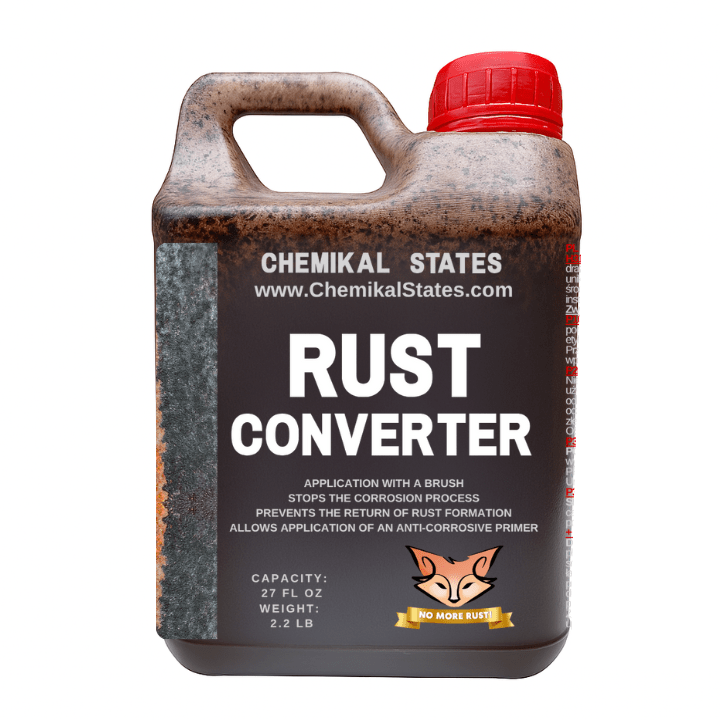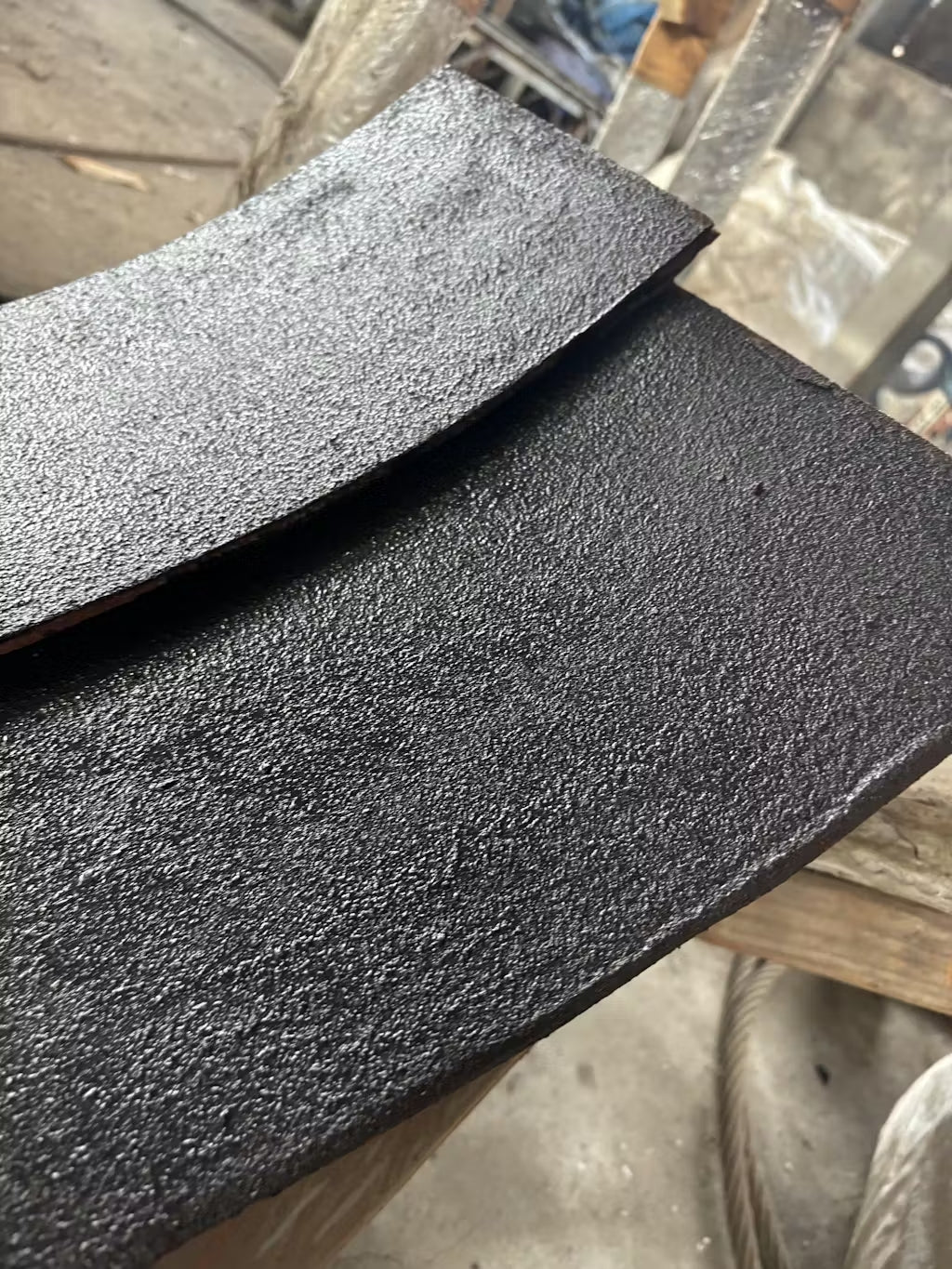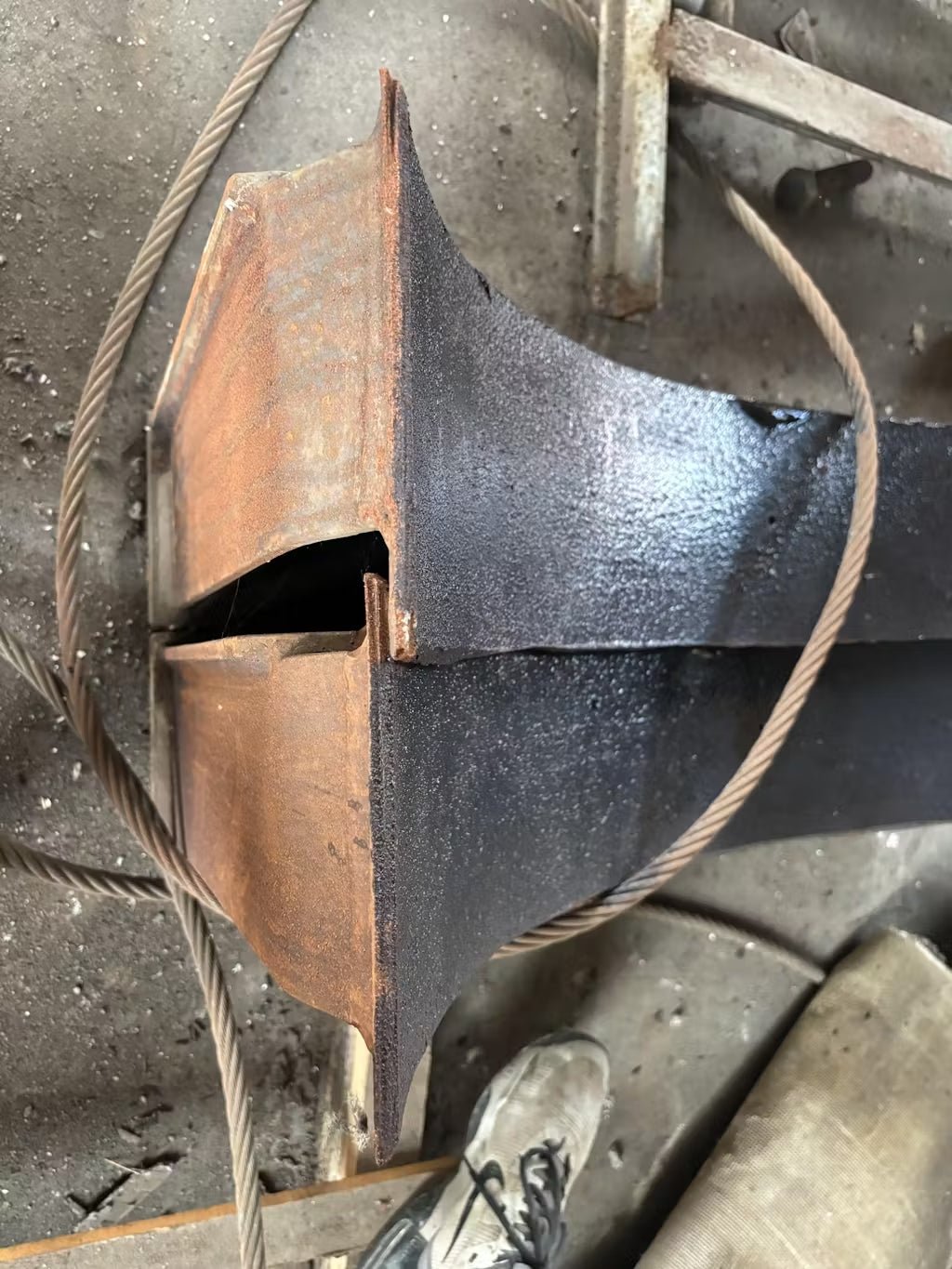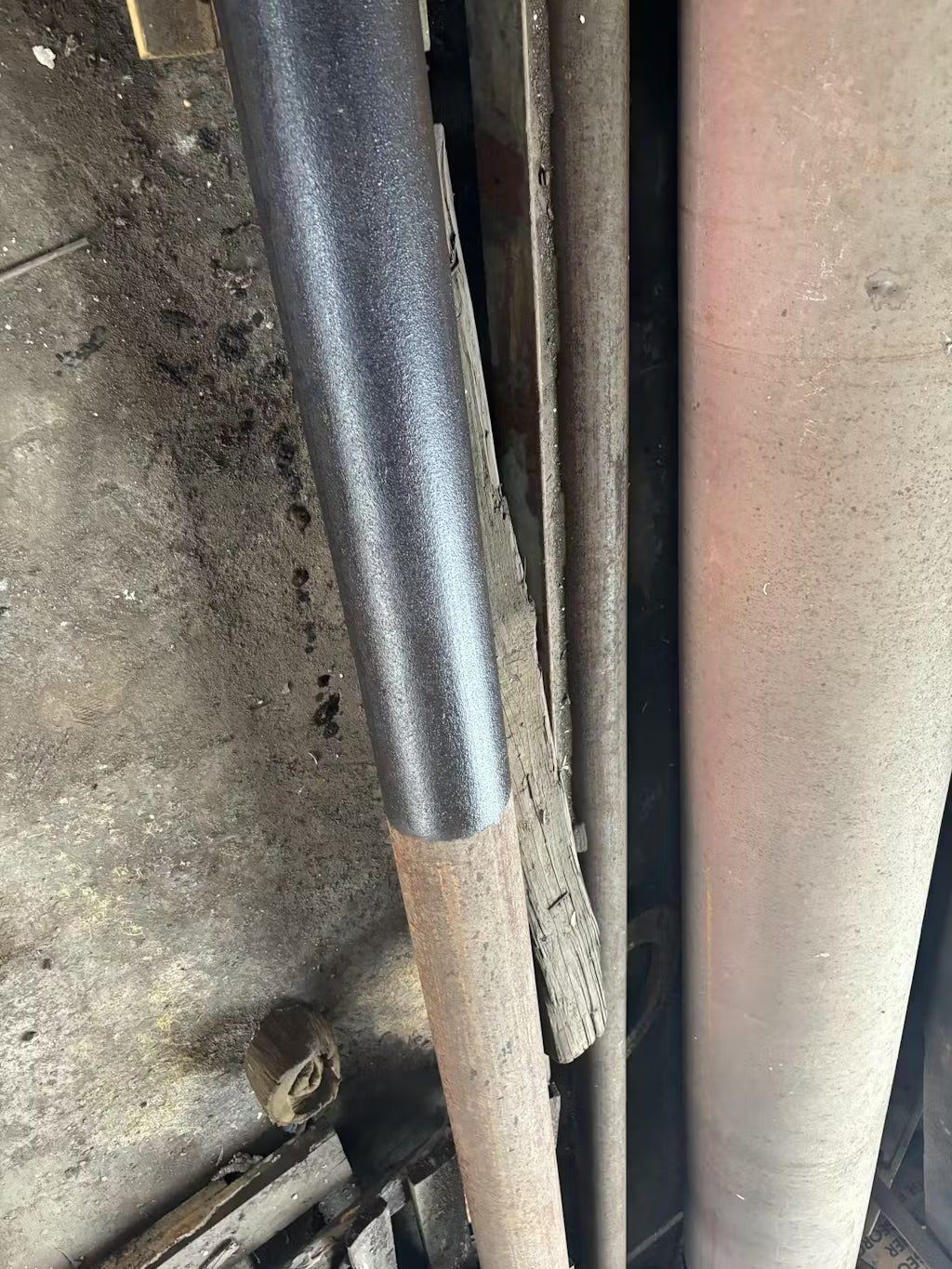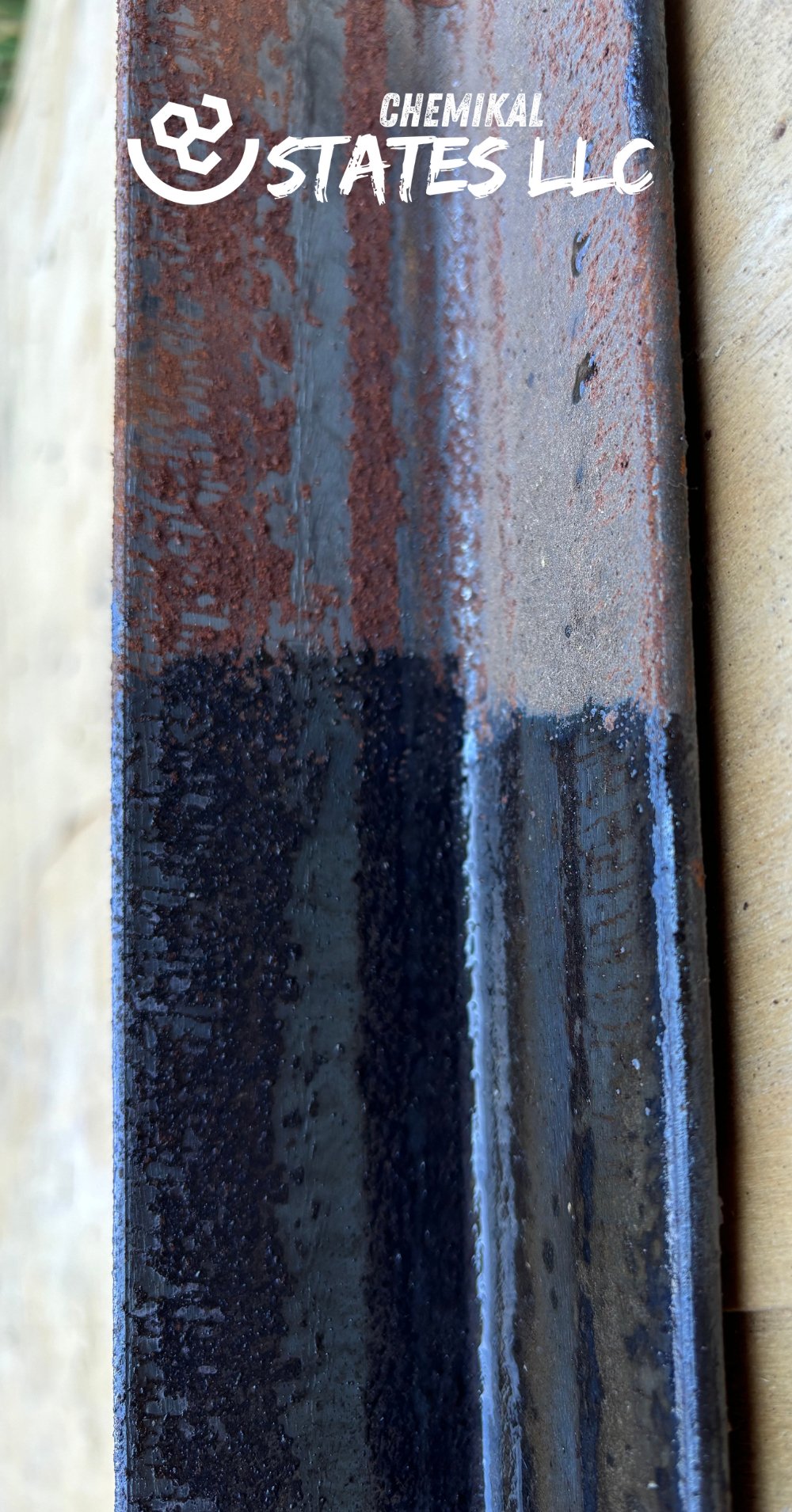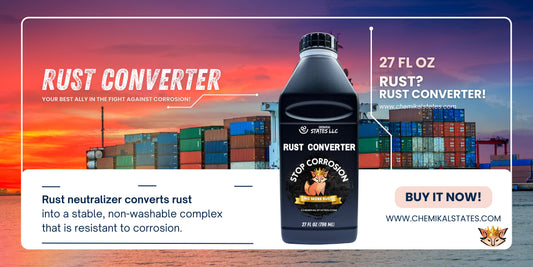Ultimate Guide to Rust and Corrosion: Expert Tips to Prevent Metal Oxidation and Discover the Best Rust Solution on the Market
Share
Since the dawn of civilization, humanity has had to confront the problem of corrosion—a natural process that degrades metal structures due to environmental exposure. Even ancient cultures, such as the Egyptians and Romans, observed that metal tools, weapons, and architectural elements deteriorated when exposed to moisture and air. Their methods of protection were simple, including coating metals with fats or oils to prevent contact with water.
During the Middle Ages, the development of metallurgy introduced new challenges in the fight against corrosion, particularly in the context of armor and weaponry. Craftsmen began experimenting with various coatings, such as tinning or applying protective layers, to extend the lifespan of their products.
The Industrial Revolution in the 18th and 19th centuries accelerated the need for more advanced methods of metal protection as steel and other metals began to be used extensively in construction, infrastructure, and machinery manufacturing. It was during this time that anti-corrosion paints and processes like galvanization, which protects steel from rusting by coating it with a thin layer of zinc, were introduced.
The 20th century saw a rapid advancement in corrosion protection technologies, including the discovery of stainless steel, whose resistance to rust is due to its high chromium content, as well as the development of advanced polymer coatings and corrosion inhibitors. Today's techniques, such as cathodic protection, nanotechnology, and research into new materials that are naturally resistant to corrosion, represent the next step in this ongoing battle against metal degradation.
Over the centuries, the approach to corrosion management has evolved from simple physical protection methods to complex chemical and technological processes that allow for long-term protection of metals in the most demanding conditions. Today, the fight against corrosion is crucial in many industrial sectors, from construction to the marine and aerospace industries, where the durability and reliability of metal components are absolutely critical.
1. Uniform Corrosion
Why does it occur?
Uniform corrosion occurs when metal is evenly exposed to corrosive environments such as moisture and oxygen. In this case, the corrosion process is uniformly distributed across the entire surface of the metal. This type of corrosion happens when the metal reacts with oxygen in the presence of moisture, forming metal oxides (rust) that slowly and evenly deteriorate the material.
What causes it?
Uniform corrosion is caused by prolonged exposure of metal to atmospheric corrosive factors. This typically affects metals that are unprotected by coatings, such as anti-corrosion paints, and metals exposed to acid rain, road salts, moisture, or high temperatures.
Where can it occur?
Uniform corrosion is common in many applications where metal is exposed to air and moisture over extended periods. Examples include pipelines, water tanks, steel structures, bridges, automotive bodies, and metal structural components exposed to atmospheric conditions.
4Fe+3O2+6H2O→4Fe(OH)3
4Fe(OH)3→2Fe2O3⋅3H2O
2. Pitting Corrosion
Why does it occur?
Pitting corrosion occurs when microscopic pits or "holes" form on the metal surface, acting as anodes, while the rest of the surface acts as a cathode. This difference in electrochemical potential accelerates the local corrosion process, leading to deep, small pits on the metal surface.
What causes it?
Pitting corrosion is often caused by the presence of chlorides in the environment, which can accelerate corrosion reactions. It can also result from imperfections in protective coatings, surface contamination, and the presence of micro-voids in the metal. This phenomenon is particularly dangerous because it is difficult to detect and can lead to sudden structural failures.
Where can it occur?
Pitting corrosion is especially common in marine environments where metal is exposed to seawater. It can also occur in industrial cooling systems, chemical storage tanks, pipes, and other equipment exposed to aggressive corrosive environments.
Fe→Fe2++2e−
2Cl−+H2O→HOCl+H++2e−
Fe2++Cl−→FeCl2
3. Crevice Corrosion
Why does it occur?
Crevice corrosion occurs in areas where metal has limited exposure to oxygen, such as in crevices, overlaps, riveted joints, or under seals. In these areas, oxygen concentration decreases, leading to a difference in electrochemical potential between the inside of the crevice and the rest of the surface. This accelerates corrosion inside the crevice.
What causes it?
Crevice corrosion is caused by the presence of tight spaces where oxygen access is restricted. This process is exacerbated in the presence of electrolytes like seawater, which can penetrate crevices and initiate corrosion. Crevice corrosion can be difficult to detect and manage, making it a significant threat to structural integrity.
Where can it occur?
Crevice corrosion often occurs in marine equipment, boilers, tanks, pipelines, and other places where metal contacts other materials or where tight spaces are present. It is also common in welded structures, where crevices can be challenging to seal from moisture and contaminants.
O2+2H2O+4e−→4OH−
Fe2++H2O→FeOH++H+
4. Galvanic Corrosion
Why does it occur?
Galvanic corrosion occurs when two different metals are in contact in the presence of an electrolyte, creating a galvanic cell. In such a setup, one metal acts as an anode and corrodes more rapidly, while the other metal (cathode) is protected. This process is driven by the difference in electrochemical potential between the two metals.
What causes it?
Galvanic corrosion is caused by the combination of dissimilar metals without proper isolation in the presence of an electrolyte, such as water or moisture. Differences in the chemical composition of the metals lead to current flow, causing one to corrode faster.
Where can it occur?
Galvanic corrosion occurs in metal joints, such as stainless steel bolts in contact with aluminum, or when different metals are used in a single structure, e.g., in the aerospace industry, construction, and on ships and boats.
Zn→Zn2++2e−
2H2O+O2+4e−→4OH−
5. Intergranular Corrosion
Why does it occur?
Intergranular corrosion occurs at the grain boundaries in metal. Grain boundaries can be areas of higher energy, making them more susceptible to chemical reactions. After processes like welding, metal can become prone to corrosion along grain boundaries, especially if there is precipitation of chemical compounds that reduce the metal's resistance to corrosion.
What causes it?
Intergranular corrosion is often caused by heat treatment processes, such as welding, which can cause precipitation of chemical compounds at grain boundaries. It can also result from improper annealing of stainless steel, leading to the formation of chromium carbides at grain boundaries, reducing corrosion resistance.
Where can it occur?
This type of corrosion is common in the aerospace, automotive, and construction industries, particularly in materials like stainless steel. It also occurs in aluminum and nickel alloys used in high-temperature environments, such as gas turbines.
Cr+C→Cr3C2
6. Stress Corrosion Cracking
Why does it occur?
Stress corrosion cracking occurs when metal is subjected to both mechanical stresses and a corrosive environment. The combination of these factors leads to the formation of cracks in the metal, which can result in sudden failure. These cracks develop along grain boundaries or structural defects.
What causes it?
Stress corrosion cracking is caused by the presence of tensile stresses in the material, which can arise from mechanical loading, residual stresses after heat treatment, or plastic deformation. Combined with a corrosive environment, such as moisture, chlorides, or ammonia, these stresses can initiate cracking.
Where can it occur?
Stress corrosion cracking occurs in various industries, such as chemical, aerospace, oil, and power plants, where metals are exposed to aggressive chemicals combined with stresses. Examples include pipelines, pressure vessels, and aircraft structural components.
7. Microbiologically Influenced Corrosion (MIC)
Why does it occur?
Microbiologically influenced corrosion (MIC) occurs due to the activity of microorganisms such as bacteria, algae, fungi, and archaea that colonize metal surfaces. These microorganisms can produce acids, hydrogen sulfide, or other aggressive chemical compounds that accelerate the corrosion process. MIC is not directly caused by microorganisms, but by their metabolic products, which can react with metals and cause degradation.
What causes it?
MIC is caused by the presence of microorganisms in the environment, which form biofilms on the metal surface. A biofilm is an organic layer that adheres to the metal and creates a microenvironment conducive to corrosion. In this microenvironment, local chemical changes occur, such as a decrease in pH, an increase in sulfide concentration, or the formation of anaerobic conditions that promote metal corrosion.
Where can it occur?
MIC is common in water systems, such as pipelines, water tanks, cooling towers, offshore platforms, and anywhere metals are in contact with water and organic materials. It is particularly problematic in the oil and gas industry, where biofilms can form inside pipelines, leading to rapid degradation and potential leaks.
SO42−+8H++8e−→S2−+4
H2O Fe2++S2−→FeS
8. Atmospheric Corrosion
Why does it occur?
Atmospheric corrosion occurs when metal is exposed to environmental factors such as moisture, oxygen, carbon dioxide, air pollutants (e.g., SO2, NOx), and salts. These environmental factors can lead to metal oxidation and the formation of oxides such as rust, resulting in material degradation.
What causes it?
Atmospheric corrosion is caused by the presence of moisture (rain, fog, condensation) on the metal surface, which, in combination with oxygen and air pollutants, initiates the oxidation process. Pollutants, such as sulfides and chlorides, can significantly accelerate this process, especially in industrial and coastal environments.
Where can it occur?
Atmospheric corrosion is common in all environments where metals are exposed to air, but it is especially intense in industrial, coastal areas, and places with high levels of air pollution. Examples include bridges, towers, buildings, cars, and urban infrastructure such as streetlights and guardrails.
2Fe+O2+2H2O→2Fe(OH)2
SO2+H2O+O2→H2SO4
9. High-Temperature Corrosion
Why does it occur?
High-temperature corrosion occurs when metals are exposed to extreme temperatures, leading to reactions with gases such as oxygen, sulfur, chlorine, and other aggressive industrial atmospheric components. At high temperatures, chemical reactions occur more rapidly, leading to the formation of metal oxides, sulfides, or chlorides on the metal surface, which can lead to its degradation.
What causes it?
High-temperature corrosion is caused by exposure to high temperatures, making metals more reactive. In the presence of oxygen, metal oxides, such as Cr2O3 or Al2O3, can form, which may protect the metal surface. However, when the environment contains aggressive compounds such as SO2, HCl, these oxides can be destroyed, and the corrosion process accelerated.
Where can it occur?
High-temperature corrosion is typical in industrial high-temperature environments, such as gas turbines, furnaces, industrial chimneys, jet engines, and pipelines carrying hot gases or liquids. It is also common in power plants where metals are exposed to prolonged high temperatures and aggressive gases.
2Fe+O2→2FeO
2Fe+S2→FeS2
Fe+Cl2→FeCl2
Rust is more than just an eyesore—it's a serious issue that can compromise the integrity of metal structures and components. Whether you’re dealing with rust on your car, tools, or home appliances, understanding the different types of corrosion and how metal oxidation occurs is crucial to preventing costly damage.
The Science of Rust: Types of Corrosion
Rust is a specific type of corrosion that occurs when iron or its alloys (like steel) react with oxygen and moisture in the environment. However, corrosion isn’t a one-size-fits-all phenomenon. Different metals, environments, and conditions can lead to various forms of corrosion, each requiring unique prevention and treatment methods.
-
Uniform Corrosion: The most common type, where metal surfaces are evenly attacked by corrosive agents like moisture and oxygen, leading to a gradual thinning of the material.
-
Pitting Corrosion: This highly localized form of corrosion leads to the formation of small pits or holes, often going unnoticed until significant damage has occurred.
-
Crevice Corrosion: Occurs in confined spaces where stagnant water or moisture accumulates, leading to corrosion in areas that are difficult to inspect or protect.
-
Galvanic Corrosion: Happens when two dissimilar metals are in contact with each other in the presence of an electrolyte, like water, leading to accelerated corrosion of the more reactive metal.
-
Intergranular Corrosion: Affects the grain boundaries of metals, particularly after processes like welding, leading to weakness along the metal’s structure.
-
Stress Corrosion Cracking (SCC): Occurs when metal is subjected to tensile stress in a corrosive environment, leading to cracks that can cause sudden failure.
-
High-Temperature Corrosion: This form of corrosion happens at elevated temperatures, often in industrial settings, where metals react with gases like oxygen, sulfur, or chlorine.
How to Stop Metal Oxidation in Its Tracks
Preventing rust and corrosion starts with understanding the process of metal oxidation—where metals lose electrons and form oxides when exposed to oxygen. Simple steps like keeping metal surfaces dry, applying protective coatings, and using rust inhibitors can significantly reduce the risk of rust formation.
However, when rust does appear, it’s essential to act quickly to prevent it from spreading. Traditional methods like sanding or using rust removers can help, but for a more lasting solution, you need a product that not only stops rust in its tracks but also prevents it from returning.
The Ultimate Rust Solution: Take Control of Corrosion Today
We’re proud to introduce the best rust prevention and treatment product on the market, specifically designed to combat all forms of corrosion. Whether you're dealing with minor surface rust or trying to protect valuable assets from long-term damage, our solution has you covered.
Why Our Rust Solution is a Game-Changer:
- Advanced Formula: Our product uses cutting-edge technology to neutralize rust and create a protective barrier that prevents future corrosion.
- Easy Application: Designed for both DIY enthusiasts and professionals, our rust solution is easy to apply, dries quickly, and provides long-lasting protection.
- Versatile Use: Suitable for use on a variety of metals, including iron, steel, aluminum, and more. Perfect for cars, tools, machinery, outdoor furniture, and any other metal surfaces at risk of rusting.
Don’t let rust dictate the lifespan of your metal belongings. With our product, you have the power to control corrosion and extend the life of your valuable items. Join the ranks of satisfied customers who have turned the tide against rust—make rust a thing of the past today!
Order now and discover why our rust solution is the go-to choice for professionals and homeowners alike. It’s time to take back control and protect your investments from the relentless march of corrosion.


